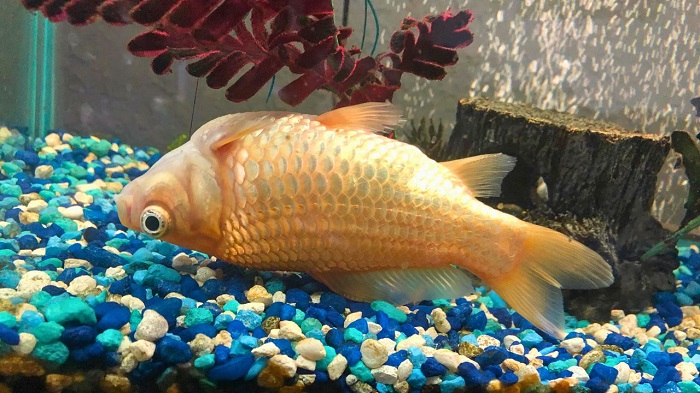Swim bladder disease is a common issue in aquarium fish. It affects the fish’s ability to control buoyancy and can make them float uncontrollably or sink to the bottom of the tank. While it can be worrying to watch, recovery is possible with proper care and attention. The time it takes for a fish to recover depends on the cause of the condition and the treatment applied.
In this article, we will look at the factors that affect recovery, possible causes, and how to cure swim bladder disease in fish.

What Causes Swim Bladder Disease?
Swim bladder disease is not a single illness but rather a symptom of an underlying problem. The swim bladder helps fish maintain balance in the water, and when it malfunctions, their movement is affected.
Some common causes include:
- Overfeeding or constipation
- Poor water quality
- Bacterial or parasitic infection
- Physical injury
- Genetic defects
Understanding the cause is important because recovery time will vary depending on whether the issue is mild or severe.
How Long Does Recovery Take?
The recovery period can range from a few days to several weeks.
- Mild cases caused by constipation or overfeeding often improve within 3 to 7 days once the diet is adjusted.
- Moderate cases caused by infections may take 1 to 3 weeks depending on how fast treatment begins.
- Severe cases related to injury or genetic problems may not fully recover, and long-term care will be needed.
Therefore, the timeline is not fixed. It is determined by how quickly the cause is identified and how effective the treatment is.
How to Cure Swim Bladder Disease
Treatment begins with identifying the likely cause. Below are common steps used to treat fish with this condition.
Adjust Feeding Habits
One of the most frequent reasons for swim bladder issues is overfeeding. Try fasting the fish for 24 to 48 hours. After that, feed small portions of high-fiber foods such as cooked peas with the shell removed. This helps clear digestive blockages that put pressure on the swim bladder.
Improve Water Quality
Test the aquarium water for ammonia, nitrite, nitrate, and pH levels. Poor water quality can stress fish and make them more prone to infections. Perform partial water changes, clean filters, and maintain proper tank conditions to support recovery.
Use Appropriate Medication
If a bacterial or parasitic infection is suspected, suitable medication may be required. Look for treatments formulated for swim bladder-related infections and follow the dosage instructions carefully.
Reduce Tank Stress
Keep the tank calm and avoid sudden changes. Lowering the water level slightly can make it easier for the fish to swim and reach the surface for food and oxygen.
Long-Term Care
In cases caused by injury or genetics, permanent cure may not be possible. However, modifications such as lowering the water level, using floating plants, and providing easy access to food can help the fish live comfortably.
Can Fish Die From Swim Bladder Disease?
Yes, if left untreated, swim bladder disease can become fatal. The fish may not be able to reach the surface for oxygen or food. This is why quick action is important. Identifying symptoms early and applying the right fix can save the fish.
Preventing Swim Bladder Disease
Prevention is better than treatment. Some simple practices can reduce the chances of this condition occurring:
- Avoid overfeeding and give a balanced diet.
- Keep water parameters stable and clean.
- Do not overcrowd the tank.
- Quarantine new fish before introducing them into the main tank.
By following these steps, the risk of recurrence is greatly reduced.
Conclusion
The recovery time for swim bladder disease depends on the root cause. Mild cases may resolve in just a few days, while more serious ones may take weeks or require ongoing care. Knowing how to cure swim bladder disease involves checking feeding habits, maintaining water quality, and providing the right treatment. By applying these methods, most fish can recover and return to healthy swimming behavior.
